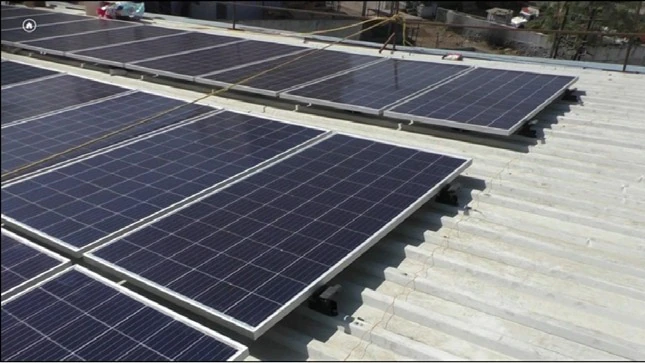Challenging road to government’s residential rooftop solar target: Report

The government’s Pradhan Mantri Surya Ghar Yojana (PMSGY) has received over 579,000 applications for residential rooftop solar installations with a capacity of 4.9 GW till July 2025. However, achieving the FY27 target of 30 GW capacity remains a major challenge, according to a new report.
Despite a nearly four-fold increase in applications between March 2024 and July 2025, only 13.1% of the target of 10 million facilities and only 14.1% of the allocated subsidies of Rs 65,700 crore till July 2025 have been met, the report by the Institute of Energy Economics and Financial Analysis (IEEFA) and JMK Research & Analytics said.
Under PMSGY, Gujarat leads all states with the highest residential rooftop installed solar capacity at 1,491 MW, followed by Maharashtra, Uttar Pradesh, Kerala and Rajasthan.
Together, these states represent approximately 77.2% of the total installed capacity (4,946 MW) under the scheme until July 2025.
“PMSGY has steadily expanded its policy framework to accelerate residential rooftop solar adoption. Since 2024, it has launched a nationwide capacity-building program to train more than three thousand people and help vendors, utilities and financiers improve their skills,” says Jyoti Gulia, founder of JMK Research, and a contributing author of the report.
The Innovative Projects component provides grants covering up to 60% of project costs to support pilot initiatives and new business models. At the same time, new digital local content requirements ensure the proven use of local materials in solar modules. In addition, states and union territories are encouraged to develop model solar cities and solar villages.
“However, low consumer awareness and access to financing remains a significant barrier to the adoption of rooftop solar,” says Prabhakar Sharma, senior consultant, JMK Research, and co-author of this report. “Outdated perceptions remain about high initial and maintenance costs, especially in rural areas.”
The report highlights that fragmented supply chains for key components of rooftop solar, such as panels, inverters and mounting structures, are also causing implementation delays.
“Setting clear and time-bound targets for rooftop solar capacity at the country level is essential to create a coherent vision and ensure effective policy implementation,” says Vibhuti Garg, IEEFA Director – South Asia, and contributing author.
A grievance redressal system has been established under PMSGY, but its effectiveness is limited.
“PMSGY must create a district-level escalation matrix so that support disbursement delays, incorrect data entries, or gateway failures can be routed beyond the DISCOM or gateway level,” says Aman Gupta, research associate at JMK Research, and co-author of this report.
Don’t miss more hot News like this! Click here to discover the latest in Business news!
2025-10-14 06:29:00




